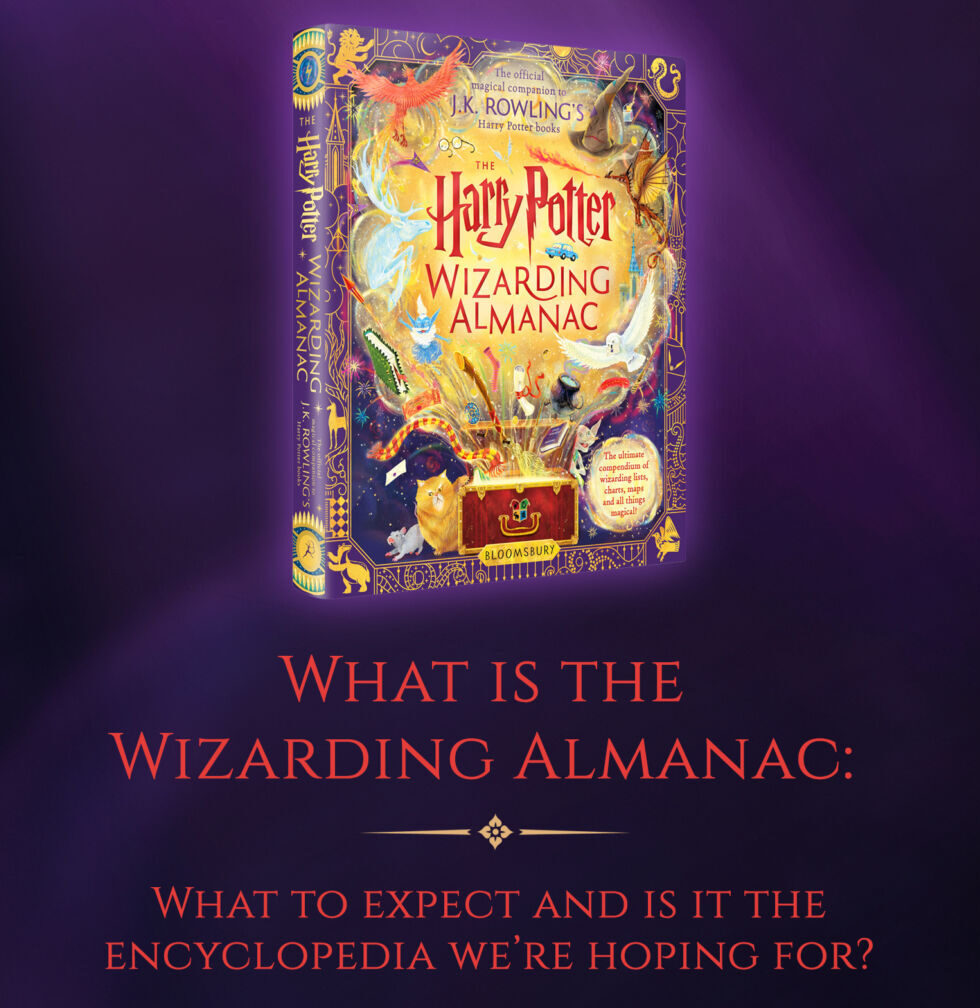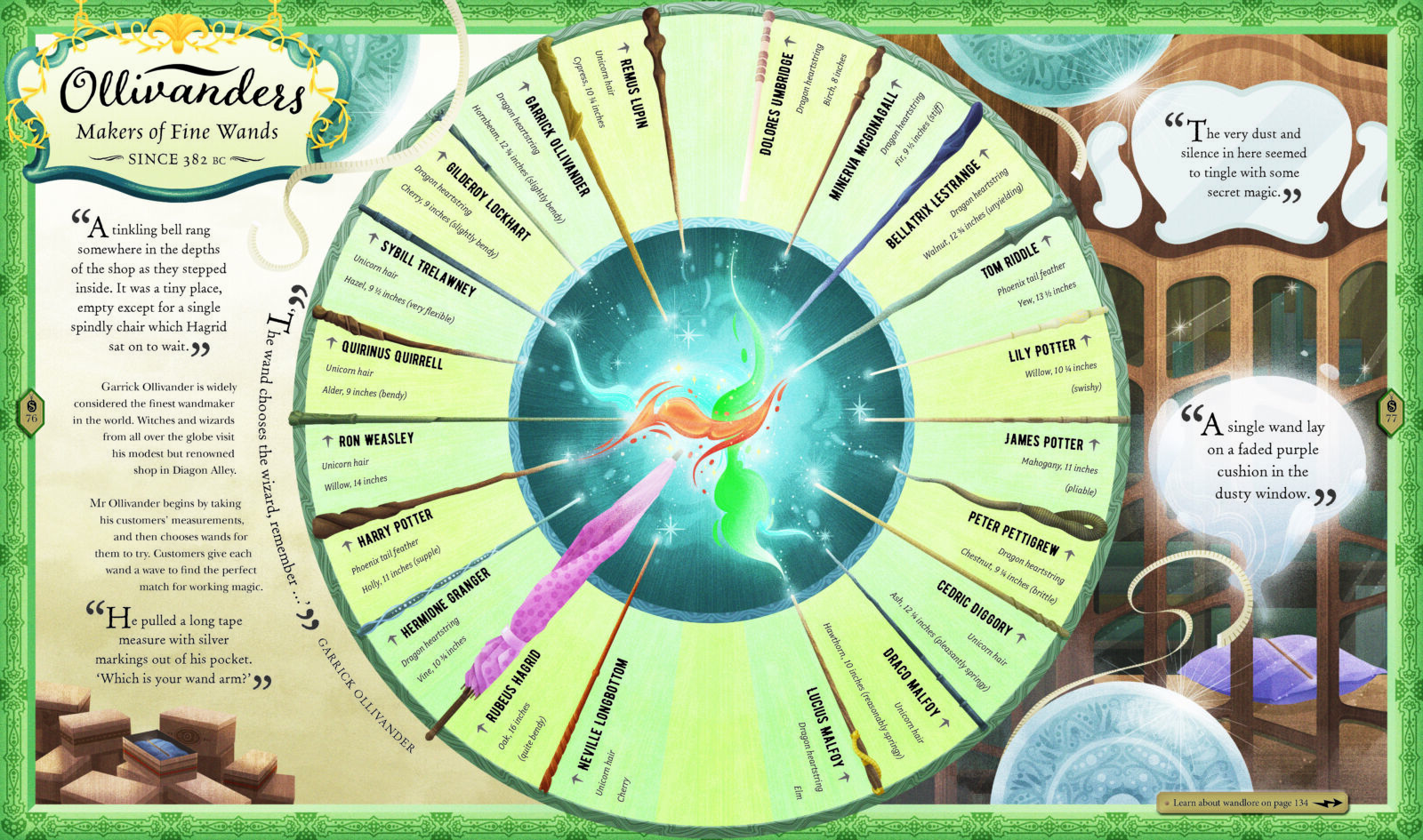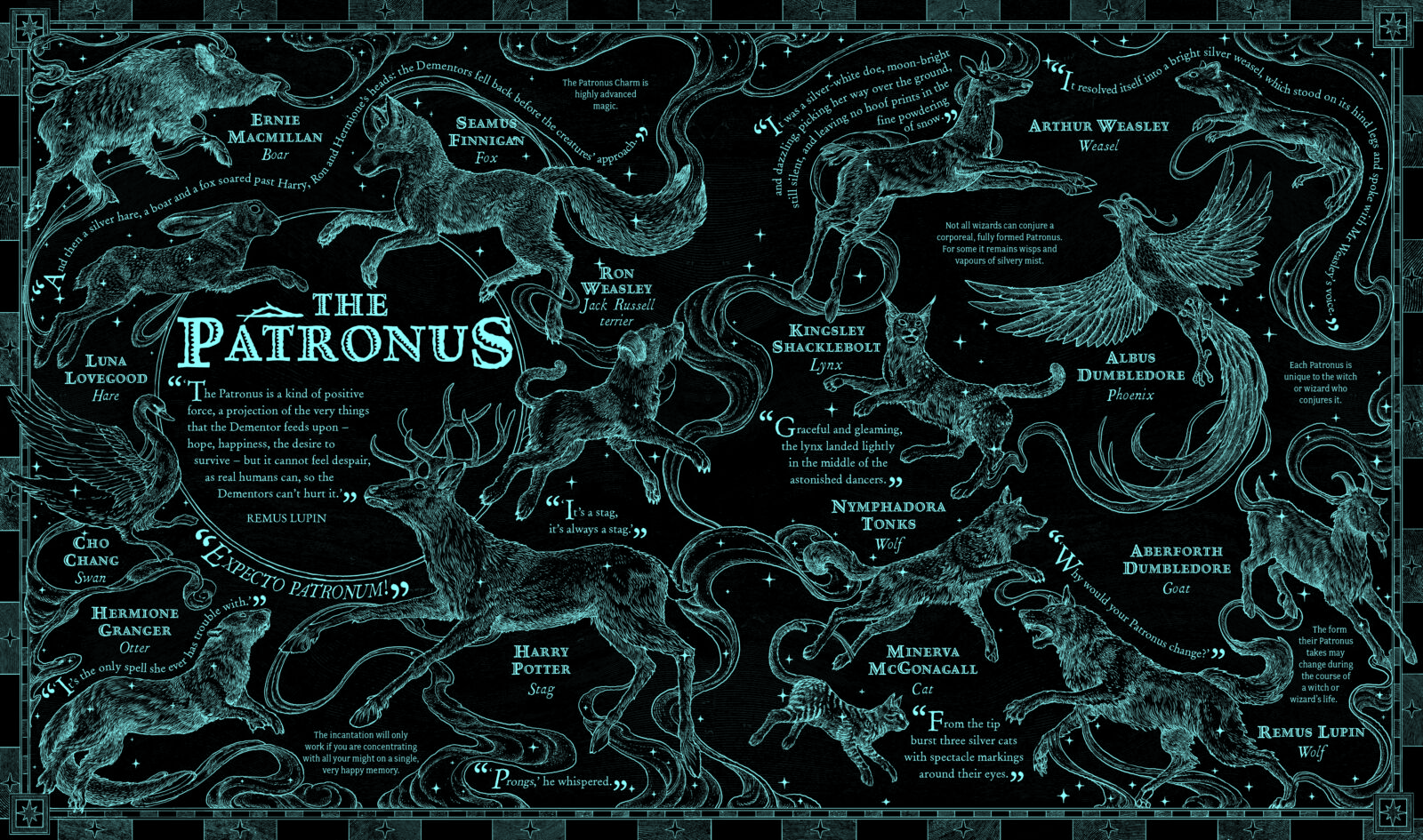
Harry Potter fans have been waiting for years for an encyclopedia of the Wizarding World written by J.K. Rowling. The author herself talked about the project several times, even naming it “The Scottish Book” so as to not jinx the project (a reference to how people would refer to Macbeth as The Scottish Play). In an interview on the Pottercast podcast in 2007, Rowling confirmed that if published, it would include methods of how to create a Horcrux, the way Peter Pettigrew gave Voldemort a body, and the reason for the murder of Florean Fortescue.
However, this project never came to life, and the original version of Pottermore ended up replacing it, publishing quite limited original content from J.K. Rowling. But a glimmer of hope came to the world of Harry Potter fans in early March, when Bloomsbury announced “the first official companion to J.K. Rowling’s Harry Potter books”: The Harry Potter Wizarding Almanac.
What is this “Wizarding Almanac”? It is a unique exploration through the wizarding world that will appeal to both new readers and hardcore fans. The book is designed to be a visual compendium of charts, cross-sections, and magical particulars, collecting together enchanted objects, fabulous foodstuffs, curious plants, and fantastic beasts from the Harry Potter universe. The seven chapters will allow readers to relive their favorite moments from the books, learn about spells and magic, and search for hidden secrets.
The book’s illustrations (which are as important as its content, as can be seen in the previews) are handled by seven different artists. It has not yet been confirmed whether each artist will be responsible for a specific chapter, or if they all worked on various parts of the book. The chosen artists are Peter Goes, Louise Lockhart, Weitong Mai, Olia Muza, Pham Quang Phuc, Levi Pinfold, and Tomislav Tomić, and their work for this book has already generated many positive comments on social media, from Peter Goes’ guide to Hogwarts to Weitong Mai’s illustration of wands. Some fans might even recognize the names of Pinfold and Tomić, as they have already worked for the Wizarding World: Pinfold illustrated the Hogwarts House Editions, while Tomić drew some internal illustrations (such as the map of Hogwarts).
But beyond the book’s art, which has already received positive feedback, what do we know about the content? Although J.K. Rowling is listed as the author, it seems she did not write any of it. A likely reason why she is listed is that a lot of Harry Potter quotes are used throughout the book. The actual content has been meticulously researched and ingeniously organized by the team at Bloomsbury Children’s Books. But does that mean we’re finally about to be able to own an official encyclopedia of the Harry Potter Magical World?
It’s safe to say that we finally have a strong competitor for the famous Harry Potter Lexicon, which Rowling banned from publication in 2008 through a lawsuit. However, what we have already seen from this book through the promotional pictures and videos does not seem to indicate the same search for completeness that we have seen in previous fanmade encyclopedias: while we feel that there is a lot of attention to detail and that the creative team behind the almanac decided to use sources that are considered highly canonical (such as the original books or Pottermore, but not the movies), it seems that they did not decide to be exhaustive and include every detail from the wizarding world.
In the images we have seen so far, two clear examples can be pointed out. On the pages about wands, there is a beautifully displayed collection of some of the characters’ wands, with details such as length, type of wood, and core. The sources used for this section are various: as said before, a mix of the Harry Potter novels themselves and the character profiles on Pottermore. However, one particular wand is missing: Horace Slughorn’s, which was described in the Pottermore Presents ebooks. The reason for this absence is unknown: did Bloomsbury intentionally ignore that source or was it an accidental omission? The fact that Slughorn’s wand is missing there makes one wonder what other data might be missing from the book.

If the wand example is not enough, there is another one. On the double page where the characters’ Patronuses are presented (incredibly illustrated by Levi Pinfold), the well-known Dolores Umbridge is noticeably absent. Strangely, the Patronus of the former Hogwarts teacher is not such a strange or difficult-to-find fact: her Patronus is mentioned in the seventh book, Harry Potter and the Deathly Hallows. This time, the justification for her absence may be a little simpler: they probably only wanted to use Patronuses of the “good” characters. It still feels odd to include most of the Patronus that we know about, yet not to add Umbridge’s one to this section.
It is true that there is a possibility that these missing pieces of information could very well be on pages that have not been shown yet, but it would also be strange. If we take Umbridge’s example, she is the only character whose Patronus is missing, so there are only two other options we can think of: include this bit on a separate page with just her Patronus, or include it alongside other Patronuses (which would end up being new Patronuses revealed by Rowling for the very first time in this book).

According to the announcements and press releases from Bloomsbury, it seems that the team who worked on the book has done an arduous task when compiling its data and verifying its source. It would seem that they have only included completely reliable sources that would be considered canon by any fan: works produced by Rowling herself, and nothing else (to read more about canon, look for our article ‘The Hierarchy of canon’ in issue 73). Therefore, its value as a reference encyclopedia lies in that: any data that appears in the book can be taken as true. But due to the aforementioned absences, we cannot consider the opposite: a piece of information that is not in the book might have very well been shared by Rowling through other means, books or interviews for example.
However this is not a criticism. Making a “comprehensive” encyclopedia of the Wizarding World would not only be a huge task, but also a difficult one to carry out in physical terms. Would it be a book of over a thousand pages? Maybe two thousand, if you add as many illustrations as The Harry Potter Almanac seems to promise?
By all means don’t let these absences decrease the value of the book: we will finally have an official printed book with at least some of the data revealed on Pottermore. Not only character data, but also what seems to be deeper content from J.K. Rowling. In one of the previews, you can read “Learn about wandlore on page 134”, reminding us that Rowling published three articles about the topic on Pottermore (Wand Woods, Wand Lengths and Flexibility, and Wand Cores). That said, we don’t know yet if this part of the book will end up including the exact same content from Pottermore, or if it will rather be a summarized graphic.
The Harry Potter Wizarding Almanac will be an illustrated guidebook about the world of Harry Potter, that we can consider faithful to J.K. Rowling’s writings, although not entirely comprehensive. From the announcements so far, it seems the book won’t include any new material from the writer. It will rather serve as a reliable reference material and a nice collectible, and even though we feel that the book won’t be suitable to be called an encyclopedia of the Wizarding World, more than one person will probably end up using it as if it was one. Since according to the Bloomsbury team we can consider that any data that will appear in the book has not only been approved by Rowling but comes straight from her mind, it feels like the book still deserves to be used by all as a reference book. And for those who do not consider this good enough, think of it as the gateway to more official encyclopedic books of the Wizarding World. Who knows, maybe enough interest in this book could make Rowling reconsider the idea of publishing The Scottish Book in a few years? And then one dream shared by many fans would be fulfilled.
